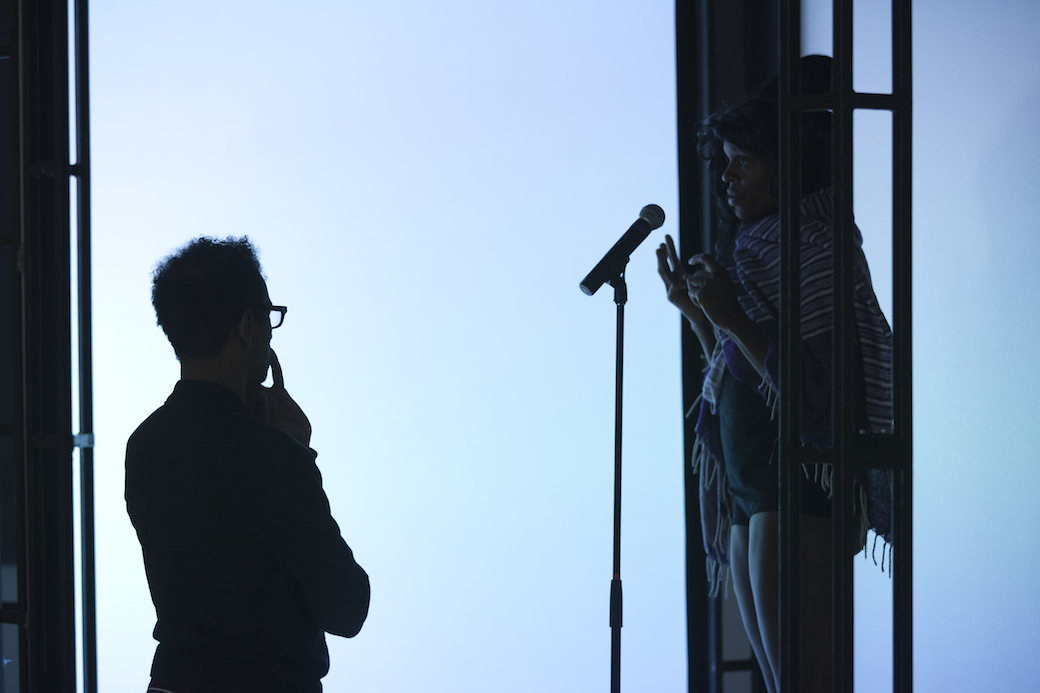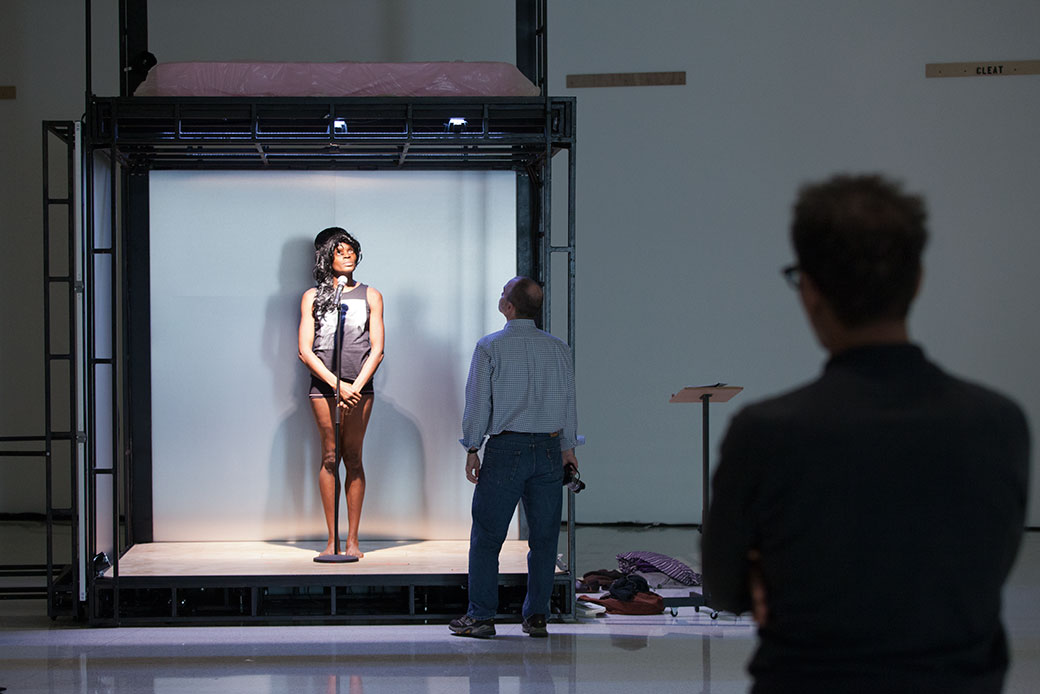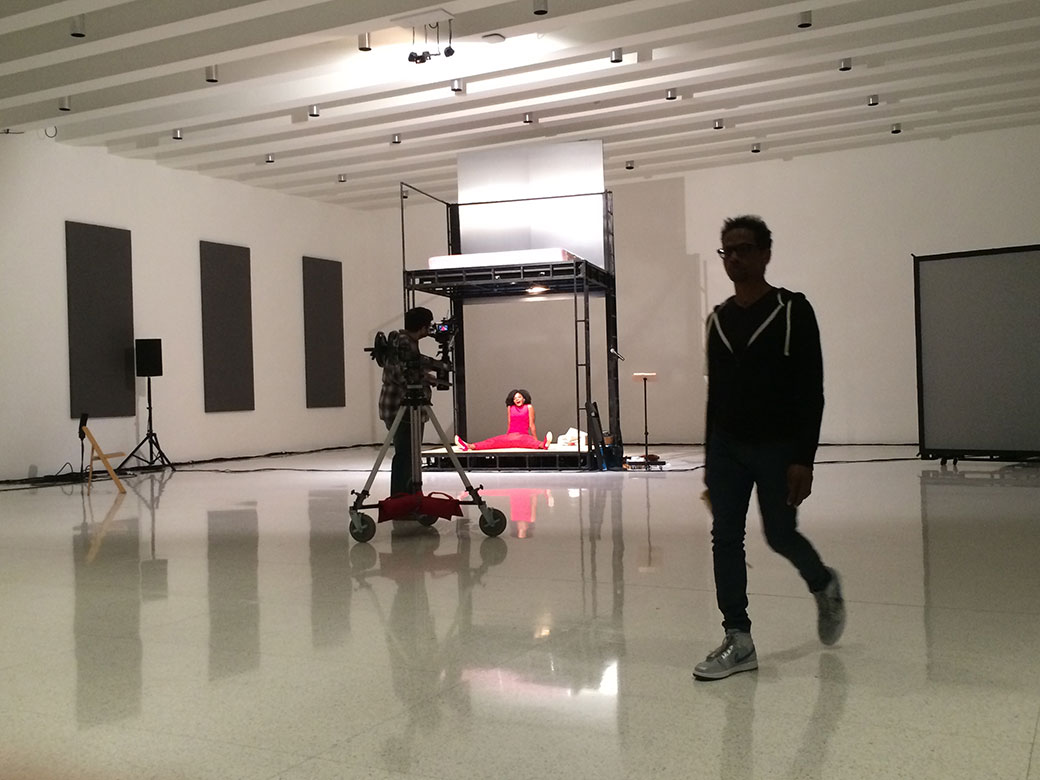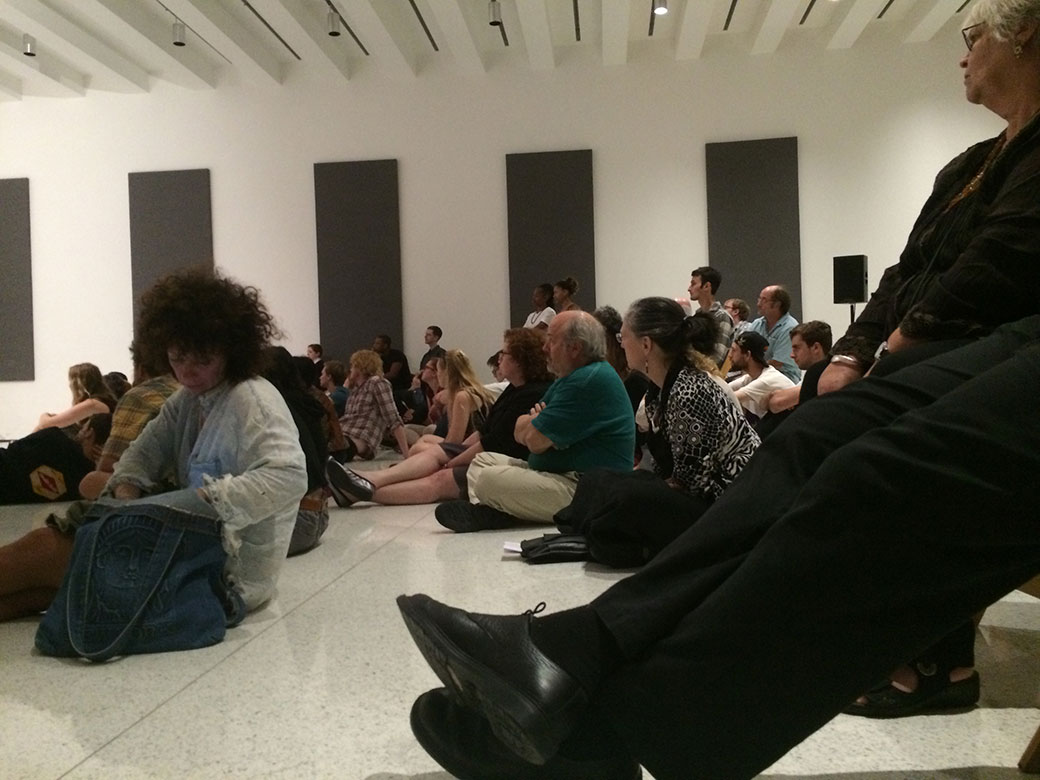
Scaffold Room installation with Okwui Okpokwasili and Ralph Lemon. Burnet Gallery at the Walker Art Center, September 2014. Photo: Gene Pittman
In presenting the actual Black female body, or images of it, do we also necessarily present all of its multiple, sometimes contradictory and competing cultural narratives? How do the tropes of the Jezebel, the Mammy, and the Bitch, for example, inhabit a Black female body in the eyes of the public, even when that Black female body is simply existing, moving, and speaking in a space? Can a male writer/creator, often invoking other male writers, deeply explore the complicated terrain of Black womanhood in a manner that is both authentic and playful? These are just some of the questions that Black male choreographer Ralph Lemon asks in his new work Scaffold Room, which took place at the Walker Art Center in Minneapolis last month.

Scaffold Room installation with Okwui Okpokwasili, scenic designer R. Eric Stone, and Ralph Lemon. Burnet Gallery at the Walker Art Center, September 2014. Photo: Gene Pittman
Part performance, part video, part gallery installation, Scaffold Room purports to challenge the public viewer’s expectation of unified form and content, and expand our understanding of the artistic object itself. As postmodern pastiche, it offers its audience hand-sketched Xeroxed maps of the museum and performance space on one side of a large brown-paper poster, and quotes related to the creation, meaning, and execution of the piece on the other. (“She’s the vortex, the churning sprawl of the future, she’ll live forever. There’s a Beyoncé in every universe so that if and when the world ends she’ll be replicated into infinity,” reads one.) It features extensive live movement and storytelling by Okwui Okpokwasili and April Matthis, with video footage from the Carters, a family in the Deep South, who don large goat heads and all manner of strange and startling costumes throughout. Okpokwasili and Matthis move around the scaffold set, largely consisting of a small center “room” of sorts and an overhead bed, while reading and referencing selections from Kathy Acker, Samuel Delany, Henry Miller, and others—many of them quite graphic.

Scaffold Room installation with April Matthis. Burnet Gallery at the Walker Art Center, September 2014. Photo: Bartholomew Ryan

Audience during last Scaffold Room performance. Burnet Gallery at the Walker Art Center, September 2014. Photo: Bartholomew Ryan
This is the conundrum that Lemon challenges the public to wrestle with: The layers upon layers of history and representations that the Black female body calls up in twenty-first-century America. The complexity of Scaffold Room lies in its refusal to adhere to one single narrative, to approach public discourse as an always unfolding and multivalent process, one that we cannot ever get a read on. But this is also Scaffold Room’s downfall: its inability to create even a semblance of cohesive meaning out of this cacophony of cultural noise. We can always take something from the flood of stories, even if we struggle to make sense of it. But for many viewers, that “something,” that story, will be entirely elusive. And for Black women, this disunity, as well as its presentation via Black female bodies, may feel false.
For as much as Scaffold Room lingers on a kind of unabashed sexuality, it feels like a decidedly male kind of sexuality—one that is all about desiring, taking, and exploding. Other embodied states of Black womanhood, such as tenacity and endurance, physical pain, listlessness, pregnancy, or growing up/growing old, are left unexplored. Sitting in the audience with a friend, another woman of color, we shared after the show that we each felt as if random noise about the (predominantly sexual) activity of Black female bodies was being broadcasted on us. But we couldn’t for the life of us figure out what the deeper (and transgressive?) effect of this was meant to be, especially since most of the other audience members were typical Walker patrons—older than us and white. If anything, we both felt “Othered” yet again in a mainstream cultural space, due to our Black and Brown female bodies and the all too familiar narratives that were being presented for public consumption about them. One would expect a project like this to interrupt or even rewrite some of the public discourse around the Black female body, since it evokes so many of these bodies. However, disappointingly, many viewers will find these hollow and largely false tropes reproduced, with little or no critique, via the many modalities of Scaffold Room. Of course, there is plenty of meaning in this, as well.



